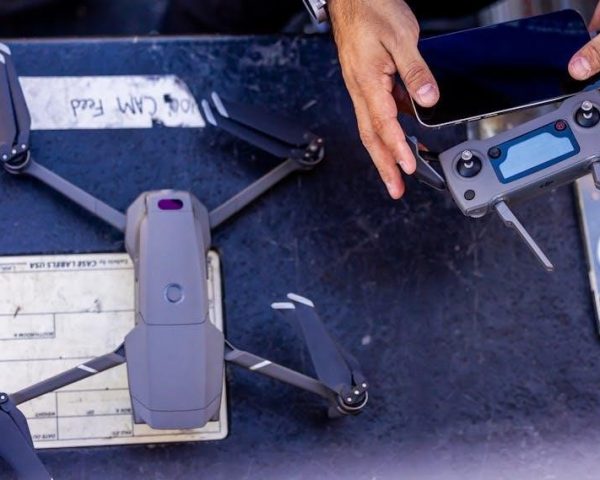Luisa Ventilator Manual: A Comprehensive Guide
This manual serves as your primary resource for understanding and effectively utilizing the Luisa ventilator․ It contains vital safety guidelines‚ operational instructions‚ and troubleshooting tips․ Familiarizing yourself with this guide will ensure optimal patient care and device performance‚ whether in a home‚ hospital‚ or care facility setting․
The Luisa ventilator‚ a product of Löwenstein Medical‚ represents a significant advancement in respiratory support technology․ Designed for both life-support and non-life-support ventilation‚ Luisa offers a versatile solution for adult and pediatric patients requiring mechanical assistance․ Its compact‚ lightweight design enhances mobility‚ making it suitable for diverse environments‚ from home settings to hospitals․
Luisa stands out due to its user-friendly interface and comprehensive features․ The device’s integrated battery ensures uninterrupted operation during power outages‚ providing an added layer of safety and reliability․ This ventilator is engineered to empower patients‚ allowing them to maintain an active lifestyle while receiving necessary respiratory care․ Its intuitive design simplifies setup and operation‚ enabling caregivers and patients to manage ventilation with ease․
This manual will guide you through every aspect of the Luisa ventilator‚ from initial setup to advanced troubleshooting․ Understanding the Luisa’s capabilities and safety features is crucial for maximizing its benefits and ensuring patient well-being․ By following the instructions provided‚ you can confidently administer respiratory support and improve the quality of life for those dependent on mechanical ventilation․ The Luisa ventilator is more than just a machine; it’s a partner in breathing‚ offering a breath of fresh air for an active life․
Intended Use of the LM150TD Luisa Ventilator
The LM150TD Luisa ventilator is specifically designed to provide continuous or intermittent ventilatory support for adult and pediatric patients․ It’s intended for individuals requiring mechanical ventilation due to conditions affecting their respiratory function․ This device is suitable for both invasive and non-invasive ventilation‚ adapting to diverse patient needs and clinical scenarios․ The Luisa can be employed in hospitals‚ care facilities‚ and domestic environments‚ providing versatile respiratory support across various settings․
The LM150TD’s capabilities extend to both life-support and non-life-support applications․ It is engineered to assist patients with a minimum tidal volume of 30 ml․ The ventilator’s design prioritizes ease of use and safety‚ ensuring that caregivers and patients can confidently operate the device․ The Luisa is intended to improve patients’ quality of life by providing reliable respiratory support․
The Luisa ventilator can be used in both the home‚ institution/hospital‚ and portable applications․ It is essential to understand the device’s intended use to ensure safe and effective operation․ This manual provides comprehensive guidance on utilizing the LM150TD Luisa ventilator for its intended purposes‚ enhancing patient outcomes and optimizing respiratory care management․ Always consult with a healthcare professional to determine the appropriate ventilation settings and modes for individual patient needs․
Safety Information and Precautions
Prioritizing safety is paramount when operating the LM150TD Luisa ventilator․ This section outlines critical safety information and precautions to mitigate potential risks and ensure patient well-being․ Always thoroughly review this section before using the ventilator and adhere to all guidelines provided․ Failure to comply with safety instructions could result in serious injury or device malfunction․
Regularly inspect the ventilator and its components for any signs of damage or wear․ Ensure all connections are secure and free from leaks․ Only use accessories and components that are approved for use with the LM150TD Luisa ventilator․ Do not attempt to modify or repair the device yourself; contact qualified service personnel for any maintenance or repairs․ Monitor the patient closely during ventilation and be vigilant for any adverse reactions or changes in condition․ Always have a backup ventilation system available in case of device failure or power outage․
Be aware of technical alarms and respond promptly to address any issues․ Ensure the intake air temperature and main board temperature remain within acceptable limits․ If a “Service Necessary” alarm appears‚ immediately contact your specialist dealer or contact․ Proper handling and storage of the ventilator are essential to prevent damage and maintain functionality․ Adhering to these safety precautions will contribute to a safe and effective ventilation experience for both patients and caregivers․
Product Description and Features
The LM150TD Luisa ventilator‚ developed by Löwenstein Medical‚ is a highly efficient and versatile device designed to provide life-support and non-life-support ventilation for both pediatric and adult patients․ Its compact and lightweight design makes it exceptionally mobile and suitable for use in various settings‚ including domestic environments‚ care facilities‚ and hospitals․ The Luisa ventilator is intended for continuous or intermittent ventilatory support for patients requiring mechanical ventilation․
Key features of the Luisa ventilator include its integrated battery‚ which ensures uninterrupted operation during power outages‚ enhancing patient safety and convenience․ The device is equipped with advanced ventilation modes to meet individual patient needs‚ with a minimum tidal volume of 30 ml․ Its user-friendly interface and intuitive controls facilitate ease of operation for healthcare professionals and caregivers․ The Luisa ventilator also incorporates comprehensive alarm systems to promptly alert users to any potential issues or deviations from set parameters․
Furthermore‚ the Luisa ventilator is designed with high-quality materials and components‚ ensuring durability and long-term reliability․ It is engineered to deliver precise and consistent ventilation‚ optimizing patient comfort and therapeutic outcomes․ The Luisa’s innovative technology and robust construction make it a valuable asset in respiratory care‚ providing reliable support for patients with diverse ventilation requirements․
Preparation and Setup
Before initiating ventilation with the Luisa ventilator‚ a thorough preparation and setup process is crucial to ensure patient safety and optimal device performance․ Begin by carefully unpacking the ventilator and verifying that all components are present and undamaged‚ referring to the included accessories list․ Position the ventilator on a stable‚ level surface‚ ensuring adequate space for proper ventilation and accessibility to controls․
Next‚ connect the appropriate patient circuit‚ ensuring compatibility with the patient’s airway interface (e․g․‚ mask‚ endotracheal tube)․ Verify the integrity of the circuit‚ checking for leaks or obstructions․ Connect the ventilator to a reliable power source‚ or ensure the internal battery is adequately charged․ Familiarize yourself with the ventilator’s control panel and display‚ understanding the function of each button and parameter․
Prior to patient connection‚ perform a pre-use check to confirm the ventilator is functioning correctly․ This includes verifying alarm settings‚ pressure limits‚ and ventilation modes․ Adjust the settings according to the physician’s orders and the patient’s specific respiratory needs․ Ensure that all necessary accessories‚ such as oxygen supply and monitoring equipment‚ are readily available․ Proper preparation and setup are paramount for safe and effective ventilation․
Operating the Luisa Ventilator
Once the Luisa ventilator is properly prepared and set up‚ operating it effectively requires a clear understanding of its various modes and settings․ Begin by selecting the appropriate ventilation mode as prescribed by the physician‚ considering the patient’s respiratory condition and therapeutic goals․ Carefully adjust parameters such as tidal volume‚ respiratory rate‚ inspiratory pressure‚ and PEEP to optimize ventilation and oxygenation․
Continuously monitor the patient’s response to ventilation‚ observing chest movement‚ respiratory effort‚ and vital signs․ Utilize the ventilator’s monitoring features to track parameters such as airway pressure‚ exhaled tidal volume‚ and oxygen saturation․ Make necessary adjustments to ventilator settings based on the patient’s clinical status and real-time monitoring data․ Pay close attention to any alarms or alerts‚ promptly addressing any issues that arise․
Regularly assess the patient’s comfort and tolerance of ventilation‚ ensuring proper humidification and airway management․ Communicate effectively with the patient and other healthcare providers to coordinate care and optimize ventilator settings․ Document all changes in ventilator settings and patient responses in the medical record․ With careful monitoring‚ appropriate adjustments‚ and effective communication‚ the Luisa ventilator can provide optimal respiratory support․
Alarm Management
The Luisa ventilator is equipped with a comprehensive alarm system designed to alert users to potential problems and ensure patient safety․ Understanding and effectively managing these alarms is crucial for optimal ventilator operation․ Alarms can indicate a variety of issues‚ including high or low airway pressure‚ disconnection‚ low tidal volume‚ apnea‚ and power failure․
When an alarm sounds‚ immediately assess the patient’s condition and the ventilator’s settings to determine the cause․ Silence the alarm temporarily to allow for investigation‚ but remember to address the underlying issue promptly․ Check the patient’s airway for obstructions‚ ensure proper connection of the ventilator circuit‚ and verify that the ventilator settings are appropriate․
Refer to the Luisa ventilator’s user manual for a detailed explanation of each alarm and recommended troubleshooting steps․ Some alarms may require immediate intervention‚ such as adjusting ventilator settings or providing manual ventilation․ Regularly test the alarm system to ensure it is functioning correctly․ Proper alarm management is essential for maintaining patient safety and preventing complications during mechanical ventilation․ If unsure‚ contact a qualified technician․
Troubleshooting Common Issues
Even with careful operation‚ occasional issues may arise with the Luisa ventilator․ This section provides guidance on troubleshooting common problems․ If the ventilator is not functioning as expected‚ first consult the user manual for specific troubleshooting steps․ A common issue is the appearance of alarms․ These alarms often indicate a problem with the circuit‚ such as a leak or obstruction․
Check all connections to ensure they are secure․ Another frequent issue is power failure․ Verify that the ventilator is properly plugged into a functioning power outlet or that the internal battery is adequately charged․ If the ventilator displays an error message‚ consult the user manual for the meaning of the code and recommended actions․
If you are unable to resolve the issue‚ contact qualified biomedical equipment technician or the equipment provider for assistance․ Do not attempt to repair the ventilator yourself‚ as this could void the warranty and potentially damage the device or harm the patient․ Always document the troubleshooting steps taken and the resulting outcome for future reference․ Regular maintenance is also key to preventing issues․
Technical Data and Specifications
This section details the technical specifications of the Luisa ventilator‚ providing critical information for clinicians and technicians․ The Luisa ventilator is designed for both invasive and non-invasive ventilation‚ suitable for adult and pediatric patients with a minimum tidal volume of 30 ml․ It operates on a wide range of AC power inputs and also features an internal battery for uninterrupted operation during power outages․
The ventilator supports various ventilation modes‚ including volume control‚ pressure control‚ and spontaneous modes‚ allowing for customized patient care․ The device’s dimensions are compact and lightweight‚ enhancing mobility and ease of use in different environments‚ such as home‚ hospital‚ or transport settings․ The Luisa ventilator incorporates advanced monitoring capabilities‚ displaying real-time data on pressure‚ volume‚ flow‚ and respiratory rate․
Alarm parameters are fully adjustable‚ ensuring timely alerts for deviations from set targets․ The ventilator’s internal components are designed for durability and reliability‚ meeting stringent industry standards․ Detailed specifications‚ including pressure ranges‚ flow rates‚ and alarm limits‚ are provided in the user manual for quick reference․ Understanding these technical details is essential for safe and effective ventilator management․
Maintenance and Cleaning
Proper maintenance and cleaning are crucial for ensuring the longevity and optimal performance of the Luisa ventilator․ Regular cleaning prevents the build-up of contaminants‚ reducing the risk of infection and maintaining device functionality․ Before performing any maintenance or cleaning procedures‚ always disconnect the ventilator from the power source and patient․
The exterior surfaces of the Luisa ventilator should be cleaned regularly with a soft‚ damp cloth and a mild detergent․ Avoid using abrasive cleaners or solvents‚ as these can damage the device․ The patient circuit‚ including tubing and masks‚ should be cleaned and disinfected according to hospital protocols or manufacturer’s instructions․ Replace disposable components‚ such as filters‚ as recommended in the user manual․
Inspect the ventilator regularly for any signs of damage or wear․ Check the power cord‚ tubing connections‚ and display screen for any issues․ Perform routine functional checks to ensure that all alarms and settings are working correctly․ Any necessary repairs should be performed by qualified personnel․ Adhering to a strict maintenance schedule will help to prolong the life of the Luisa ventilator and ensure its reliable operation‚ thus ensuring patient safety and well-being․
Downloads and Resources
To further assist you in understanding and operating the Luisa ventilator‚ we offer a variety of downloadable resources․ These materials include the complete user manual‚ which provides detailed instructions on all aspects of the device‚ from initial setup to advanced features․ You can also find quick start guides that offer a concise overview of essential functions for immediate use․
In addition to the manuals‚ we provide troubleshooting guides to help you address common issues that may arise during operation․ These guides offer step-by-step solutions to quickly resolve problems and minimize downtime․ For technical specifications and performance data‚ refer to the product datasheet‚ which contains detailed information about the ventilator’s capabilities and limitations․
Furthermore‚ we offer software updates to ensure that your Luisa ventilator is running the latest version of the operating system․ These updates include performance improvements‚ bug fixes‚ and new features to enhance the device’s functionality․ All downloadable resources are available on our website‚ easily accessible for your convenience․ We strive to provide comprehensive support to ensure that you can confidently and effectively utilize the Luisa ventilator․
Contacting Support
We understand that questions or technical issues may arise during the use of the Luisa ventilator․ Our dedicated support team is available to provide assistance and guidance to ensure your experience is smooth and efficient․ For immediate support‚ please call our toll-free hotline‚ available 24/7‚ where trained technicians can address urgent concerns and provide real-time troubleshooting․
Alternatively‚ you can reach out to us via email for non-urgent inquiries․ Our support team will respond promptly‚ typically within one business day‚ to answer your questions and provide detailed solutions․ For more complex issues or specific technical assistance‚ we offer remote support sessions where our technicians can remotely access your device (with your permission) to diagnose and resolve problems․
In addition to direct support channels‚ our website features a comprehensive FAQ section that addresses common questions and concerns․ You can also find helpful video tutorials and articles in our online knowledge base․ We are committed to providing exceptional support to ensure that you can confidently and effectively utilize the Luisa ventilator․ Your satisfaction and the well-being of your patients are our top priorities․


